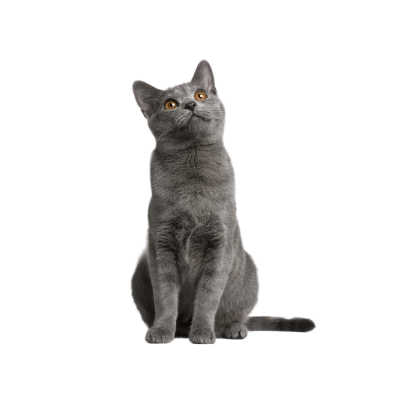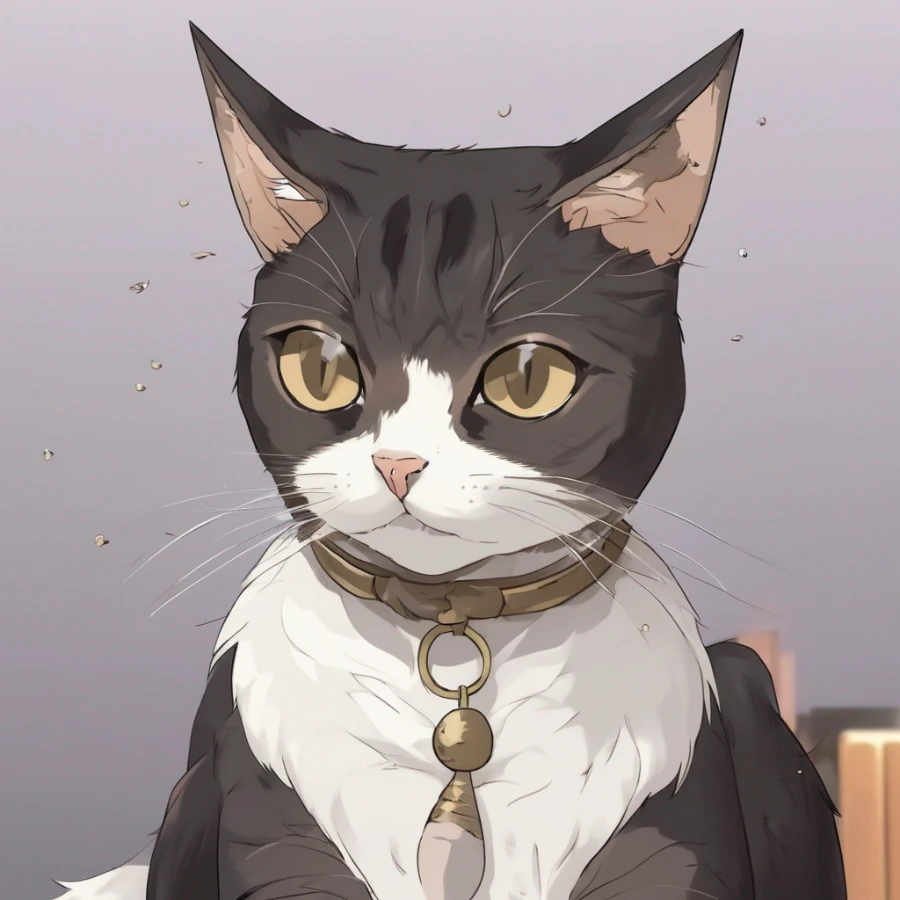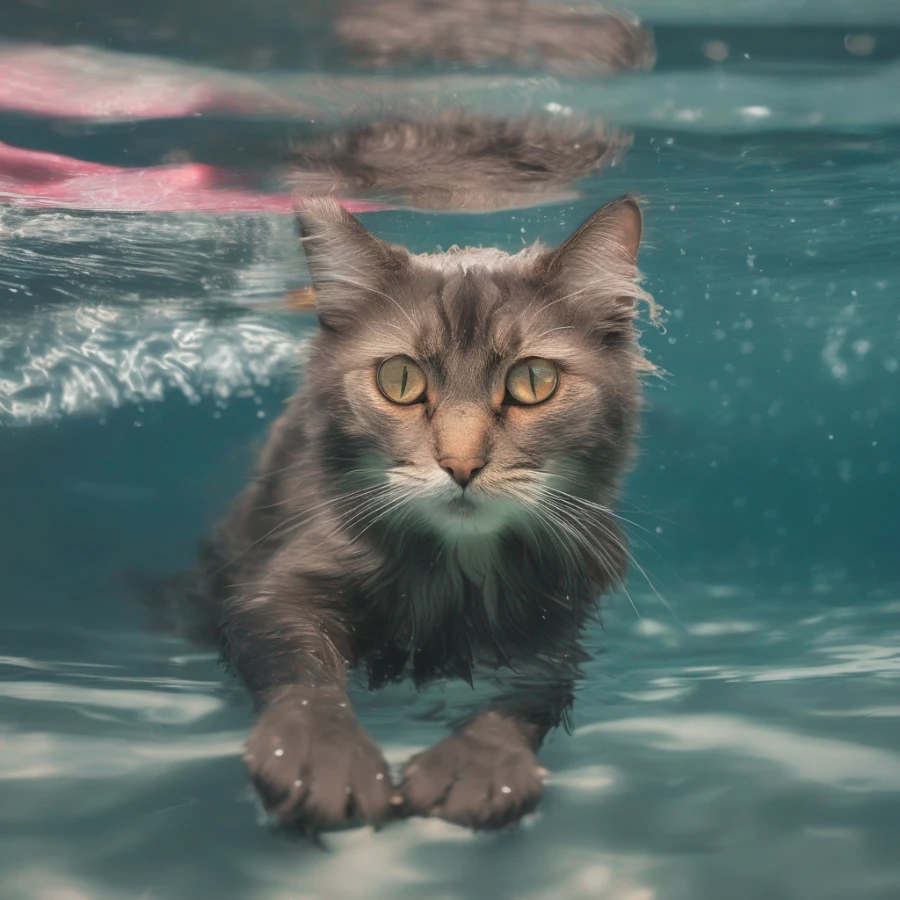The Ultimate Guide to Chartreux Cat
Chartreux cats: Mystique and charm in a distinctive blue coat. An ancient French breed embodying quiet elegance. Known for their affectionate yet independent nature. A living piece of history that brings warmth and companionship to any home.
Origin France
Weight 11 to 18 lbs
Height 8 to 11 inches
Size Large
Hypoallergenic Yes
Life 12-16 years
Price 800$
Coat Short

Chartreux Cat Review
The Chartreux is a breed of domestic cat known for its distinctive appearance and gentle temperament. Here is a summary of the Chartreux cat:
Appearance: Chartreux cats are medium-sized with a robust and muscular build. They have a broad chest, rounded head, and expressive eyes that are typically copper or gold in color. One of their defining features is their dense, water-repellent double coat, which is usually blue-gray in color.
Origins: The exact origins of the Chartreux are unclear, but they are believed to have originated in France, possibly as early as the 16th century. They were named after the Chartreuse monks who may have bred them in their monasteries.
Personality: Chartreux cats are known for their calm and gentle nature. They are generally quiet and reserved but form strong bonds with their human companions. They are affectionate and enjoy being in the company of their family members. Chartreux cats are known to be intelligent and adaptable, making them great companions for various living situations.
Activity Level: While Chartreux cats are not overly active or hyperactive, they still enjoy playtime and interactive toys. They are generally content with moderate exercise and can adapt well to indoor living environments. However, they also appreciate having some access to the outdoors in a safe and secure manner.
Care: The Chartreux's dense double coat requires regular brushing to prevent matting and to keep it in good condition. Their grooming needs are relatively low compared to some other long-haired breeds. Additionally, routine veterinary care, including vaccinations and check-ups, is necessary to ensure their overall health.
Health: Chartreux cats are generally healthy and not prone to specific breed-related health issues. However, like all cats, they can still develop common health problems such as dental issues, obesity, and certain genetic conditions. Regular vet visits and a balanced diet can help maintain their well-being.
Compatibility: Chartreux cats are known to get along well with other pets, including dogs, as long as proper introductions and gradual acclimation are done. They are also generally good with children, as they have a patient and tolerant nature.
In summary, the Chartreux is a medium-sized cat breed known for its striking appearance, gentle temperament, and intelligence. They make wonderful companions for individuals or families looking for a calm and affectionate feline companion.
Chartreux Origin
The history of the Chartreux cat is shrouded in some mystery and speculation. While the exact origins of the breed remain uncertain, there are several theories about its development:
Ancient Origins: Some believe that the Chartreux has ancient roots, tracing back to the domestic cats of ancient Egypt. It is thought that these cats were brought to Europe by Crusaders or Phoenician traders.
Monastic Breeding: One popular theory suggests that the Chartreux breed was developed by monks at the Grande Chartreuse monastery in France. The Carthusian monks, known for their seclusion and dedication to silence, are believed to have bred these cats for their companionship and for their hunting skills in controlling rodent populations.
Natural Development: Another theory proposes that the Chartreux is a naturally occurring breed that evolved in the French countryside. The cats in this region were said to possess the distinctive blue-gray coat, robust body, and gentle temperament that characterize the breed.
Regardless of their precise origins, the Chartreux became recognized as a distinct breed in the mid-20th century. The breed gained popularity in France and eventually spread to other parts of Europe and the United States.
In 1931, the Chartreux was officially recognized as a breed in France by the Cat Club de France. The breed standard was established, outlining the desired physical characteristics, such as the coat color, body shape, and eye color.
During World War II, the Chartreux faced a decline in population, with many cats being lost or killed. Efforts were made after the war to revive the breed, and the Chartreux population slowly recovered.
In the 1970s, Chartreux cats were imported to the United States, where they gained popularity among cat enthusiasts. The breed was recognized by major cat registries, such as The International Cat Association (TICA) and the Cat Fanciers' Association (CFA), further establishing its presence in the cat fancy community.
Today, the Chartreux is cherished for its unique appearance, gentle disposition, and loyal companionship. It is recognized and appreciated by cat lovers worldwide, and breeding programs are in place to preserve and promote the breed's distinct qualities.
Chartreux Characteristics
The Chartreux cat has several distinctive characteristics that set it apart from other breeds. Here are some notable features of the Chartreux:
Appearance: The Chartreux is a medium-sized cat with a robust and muscular build. They have a broad chest, sturdy legs, and a well-rounded abdomen. Their head is rounded with high cheekbones, giving them a sweet and gentle expression. The most prominent feature of their appearance is their dense double coat, which is woolly in texture and water-repellent. The coat color is typically a solid blue-gray, though it can vary in shade.
Coat: The Chartreux's double coat consists of a dense undercoat and a coarse outer layer. This gives them a plush, woolly appearance. Their coat is designed to protect them from the elements and provide insulation. The coat requires regular brushing to prevent matting and to keep it in good condition.
Eye Color: The eyes of the Chartreux are one of their defining features. They are usually large, rounded, and expressive. The eye color is typically copper or gold, though shades of green can also occur. Their eyes contribute to their gentle and contemplative expression.
Temperament: Chartreux cats are known for their calm and gentle temperament. They are generally quiet and reserved, but they form strong bonds with their human companions. Chartreux cats are loving and affectionate, often seeking out close physical contact. They are known to be patient and tolerant, making them suitable for households with children or other pets.
Chartreux Temperament
Affectionate
80%
Chartreux cats are known for being affectionate and loving companions.
Intelligence
90%
Chartreux cats are considered intelligent felines.
Playfulness
70%
Chartreux cats are known to possess a playful nature. While they may not be as energetically playful as some other cat breeds, they still enjoy
Chartreux Personality
The Chartreux cat has a distinct and endearing personality. Here are some notable traits of their personality:
Calm and Gentle: Chartreux cats are known for their calm and serene nature. They have a quiet demeanor and tend to be relaxed and composed in their behavior. They often exude a sense of tranquility, making them a soothing presence in the home.
Affectionate and Loyal: Chartreux cats form strong bonds with their human companions. They are known to be affectionate and enjoy close physical contact with their owners. They are often found curling up next to their loved ones or following them around the house. They have a loyal nature and are devoted to their family members.
Intelligent and Curious: Chartreux cats are intelligent and curious creatures. They enjoy exploring their environment and investigating new things. They are quick learners and can figure out puzzles or interactive toys. Their intelligence makes them adaptable and receptive to training.
Playful and Energetic: While not as hyperactive as some other breeds, Chartreux cats still have a playful side. They enjoy interactive playtime and engaging in activities that stimulate their minds. They may chase toys, play with puzzle toys, or engage in gentle wrestling with their owners.
Independent and Self-Reliant: Chartreux cats also have an independent streak. They are capable of entertaining themselves and can be content spending time alone. However, they still appreciate human companionship and thrive in a loving and attentive environment.
Gentle with Children and Other Pets: Chartreux cats are generally tolerant and patient, making them well-suited for households with children or other pets. They tend to get along well with others and can adapt to different social dynamics.
Overall, the Chartreux cat's personality combines a calm and gentle nature with intelligence, playfulness, and a strong bond with their human family. They make wonderful companions and bring joy and affection to their owners' lives.
Chartreux Colors
The Chartreux cat breed is typically associated with a specific coat color, which is a solid blue-gray. The coat color of the Chartreux is often described as a beautiful shade of bluish-gray, reminiscent of the color of a stormy sky. However, it is important to note that there can be some variation in the shade of blue-gray among individual cats. Some Chartreux cats may have a slightly lighter or darker hue of blue-gray, but the overall coat color remains solid without any significant patterns or markings.
Chartreux Traits
Activity
50%
Chartreux cats have a moderate activity level. While they are not hyperactive or overly energetic.
Vocal
30%
Chartreux cats are generally known for being quiet and not excessively vocal.
Grooming
30%
Chartreux cats have a moderate grooming requirement.
Chartreux Cat Grooming and Vocal
Grooming: Chartreux cats have a relatively low-maintenance grooming routine compared to some other long-haired breeds. Their dense, double coat requires regular brushing to prevent matting and to keep it in good condition. A weekly brushing session with a soft bristle brush or a stainless steel comb is usually sufficient. During shedding seasons, more frequent brushing may be necessary to manage loose hair. The Chartreux's coat is water-repellent, so they don't require frequent baths unless they get particularly dirty. However, regular nail trims, dental care, and ear cleaning should still be a part of their grooming routine.
Vocality: Chartreux cats are generally known for being quiet and not excessively vocal. While they may occasionally communicate with soft and melodic sounds, they are not prone to constant meowing or loud vocalizations. However, it's important to remember that individual cat personalities can vary, and some Chartreux cats may be more talkative than others. Their vocalizations are typically used to express their needs, communicate with their owners, or seek attention. Overall, the Chartreux breed is not known for being overly vocal or demanding in terms of vocal communication.
Are Chartreux Cats Hypoallergenic: Understanding Allergies and Compatibility
The Chartreux cat breed is often claimed to be hypoallergenic, meaning they are less likely to cause allergic reactions in people who are sensitive to cats. However, it's important to note that no cat breed is completely hypoallergenic.
While the Chartreux cat breed produces the allergenic protein Fel d 1, which is primarily found in their saliva, dander, and urine like most cats, some individuals with allergies may find that they have a milder reaction to Chartreux cats compared to other breeds. This could be due to factors such as their coat texture and lower levels of allergenic proteins.
However, it's crucial to understand that allergic reactions to cats are highly individualized, and different people can have varying sensitivities and reactions. Some individuals with allergies may still experience symptoms even with a supposedly hypoallergenic breed like the Chartreux.
If you have allergies and are considering getting a Chartreux cat or any other cat breed, it is recommended to spend time with the specific cat you're interested in to see if you have any allergic reactions. You may also consult with an allergist or immunologist for guidance on managing allergies and determining which cat breeds or individual cats may be more suitable for your specific circumstances.
Chartreux Health Issues: Care Tips and Guidelines
Chartreux cats are generally considered a healthy breed with no specific breed-related health issues. However, like all cats, they can still be prone to certain health conditions. It's important to provide regular veterinary care, including vaccinations, check-ups, and preventive treatments, to maintain their overall health. Here are some common health considerations for Chartreux cats:
Hypertrophic Cardiomyopathy (HCM): HCM is a heart condition that can affect cats, including the Chartreux breed. Regular cardiac screenings and check-ups with a veterinarian are recommended to monitor heart health.
Polycystic Kidney Disease (PKD): PKD is an inherited condition that can lead to the formation of cysts in the kidneys. Responsible breeders perform genetic testing on their breeding cats to help reduce the risk of passing on this condition.
Dental Health: Chartreux cats, like many other breeds, may be prone to dental issues such as periodontal disease. Regular dental care, including tooth brushing and professional cleanings, is important to maintain good oral hygiene.
Obesity: Chartreux cats have a tendency to gain weight if overfed or if their activity levels are insufficient. A balanced diet and regular exercise are essential to prevent obesity-related health problems.
Gastrointestinal Issues: Some Chartreux cats may be sensitive to certain foods or have a predisposition to gastrointestinal issues such as food allergies or inflammatory bowel disease. Monitoring their diet and consulting with a veterinarian can help manage these conditions.
It's important to note that while these health issues can occur in Chartreux cats, not all individuals will be affected. By obtaining a kitten from a reputable breeder who screens their breeding cats for genetic diseases and providing them with proper care, nutrition, and regular veterinary check-ups, you can help promote their overall health and well-being.
Chartreux Cat Names: Picking the Best Name For Cat

Blue, Smoky, Misty, Luna, Oliver
Chartreux Care
To ensure the well-being of your Chartreux cat, here are some key aspects of their care:
Diet: Provide a balanced and nutritious diet that is appropriate for your cat's age, activity level, and overall health. High-quality cat food, either commercially available or homemade under veterinary guidance, should be the mainstay of their diet. Avoid overfeeding to prevent obesity.
Regular Veterinary Check-ups: Schedule regular visits to the veterinarian for routine check-ups, vaccinations, and preventive care. Regular examinations can help detect any potential health issues early and ensure your cat's overall well-being.
Grooming: Although Chartreux cats have a relatively low-maintenance coat, regular grooming is still necessary to prevent matting and keep their fur in good condition. Brush their coat at least once a week using a soft bristle brush or stainless steel comb. Monitor their ears, teeth, and nails, and attend to any necessary grooming needs.
Environmental Enrichment: Provide environmental enrichment to keep your Chartreux cat mentally stimulated and physically active. This includes providing toys, scratching posts, climbing structures, and interactive playtime. Rotate toys regularly to keep their interest.
Litter Box Maintenance: Ensure that your cat has access to a clean litter box at all times. Scoop the litter box daily, change the litter regularly, and provide multiple litter boxes if you have multiple cats. Choose a litter that your cat prefers and is safe for their health.
Dental Care: Good dental hygiene is important for your Chartreux cat's overall health. Brush their teeth regularly with a cat-specific toothbrush and toothpaste. Dental treats or toys can also help promote dental health.
Safety and Environment: Create a safe environment for your Chartreux cat. Ensure that they cannot access hazardous substances or plants, and secure windows and balconies to prevent accidents. Provide scratching posts and appropriate outlets for their natural behaviors.
Emotional Well-being: Give your Chartreux cat plenty of love, attention, and affection. Spend quality time with them, provide positive reinforcement, and create a peaceful and secure environment. Chartreux cats thrive on the companionship and bond they form with their human family.
By providing proper care, attention, and a loving home environment, you can help ensure that your Chartreux cat lives a happy and healthy life.
Chartreux Kitten: Tips for Finding Your Perfect Feline Companion
When choosing a Chartreux kitten, it's important to consider several factors to ensure you find a healthy and well-suited companion. Here are some guidelines for selecting a Chartreux kitten:
Reputable Breeder: Seek a reputable breeder who prioritizes the health and well-being of their cats. They should be knowledgeable about the breed, perform health screenings on their breeding cats, and provide proper care and socialization for the kittens.
Health Check: Ensure that the kitten and its parents have received appropriate veterinary care, including vaccinations and regular check-ups. The breeder should be able to provide you with documentation of the kitten's health history, including vaccination records and any relevant health tests.
Physical Examination: Observe the kitten's overall appearance and condition. They should have bright and clear eyes, a clean and shiny coat, and be active and alert. Check for any signs of illness, such as discharge from the eyes or nose, lethargy, or poor coat condition.
Socialization and Temperament: Spend time interacting with the kitten to assess its temperament and socialization. A well-socialized Chartreux kitten should be curious, friendly, and comfortable with human contact. They should show interest in playing and be comfortable being handled.
Parental Behavior: If possible, observe the behavior of the kitten's parents. This can give you an idea of the temperament and personality traits that the kitten may inherit.
Compatibility: Consider your lifestyle and preferences when selecting a kitten. Discuss your expectations with the breeder to ensure the chosen kitten matches your desired level of activity and companionship.
Documentation and Contracts: Ensure that you receive proper documentation, such as a health certificate, registration papers, and a contract outlining the terms of the sale, health guarantees, and any breeding or show restrictions (if applicable).
Remember, bringing a kitten into your home is a long-term commitment, so take your time, ask questions, and choose a kitten that feels like the right fit for you and your family.
Chartreux Size
Chartreux cats are considered to be a medium to large-sized breed. Here are some general size characteristics of Chartreux cats:
Weight: Male Chartreux cats typically weigh between 10 to 16 pounds (4.5 to 7.2 kilograms), while females usually weigh between 6 to 12 pounds (2.7 to 5.4 kilograms).
Body Structure: Chartreux cats have a robust and muscular body. They have a solid and well-developed bone structure, giving them a sturdy appearance.
Build: Chartreux cats have a compact and rounded body shape. They are not as slender or elongated as some other breeds. Their chest is broad and their legs are proportionate to their body size.
It's important to note that these size ranges are general guidelines, and individual Chartreux cats may vary in size depending on factors such as genetics, diet, and overall health.
Chartreux Lifespan
Chartreux cats have an average lifespan of around 12 to 16 years. However, with proper care, some Chartreux cats can live even longer, reaching their late teens or early twenties. It's important to note that individual cat health and longevity can vary based on various factors, including genetics, diet, exercise, and overall healthcare. Providing a well-balanced diet, regular veterinary check-ups, a stimulating environment, and plenty of love and attention can contribute to a long and healthy life for a Chartreux cat.
Chartreux Price
The price of a Chartreux cat can vary depending on various factors such as the cat's lineage, quality, age, location, and the reputation of the breeder. Generally, Chartreux cats are considered a relatively rare breed, and their price can be higher compared to more common domestic cat breeds.
On average, the price range for a Chartreux kitten from a reputable breeder can be anywhere from $800 to $1500 or even higher. Show-quality or breeding-quality Chartreux cats can command higher prices. Additionally, older cats or retired breeding cats may be available at a lower cost.
It's important to note that the cost of acquiring a cat is just one aspect of cat ownership. Other expenses to consider include ongoing veterinary care, vaccinations, spaying or neutering, food, grooming supplies, and toys.
Chartreux Facts
The Chartreux cat, an enigmatic and ancient breed, has an alluring presence that captures the imagination. With roots stretching back to centuries past, this feline has charmed its way into the hearts of many. Its unique appearance is characterized by a rounded head that seems to wear a perpetual smile, complemented by a dense and luxurious blue-gray coat that shimmers like the finest silver.
What sets the Chartreux apart is not just its physical attributes, but its mannerisms as well. Known as "the silent paws," these cats move with a graceful, almost ethereal quietness, a trait likely inherited from their historical roles as skilled hunters. Beneath their serene exterior lies a playful and intelligent spirit. Their penchant for interactive play and problem-solving puzzles showcases their sharp minds and adds a delightful layer to their personality.
Yet, the Chartreux is more than just a puzzle-solving entertainer; it is a loyal and devoted companion. With their adaptable and easygoing nature, Chartreux cats thrive in various living situations, adapting equally well to apartment life or a spacious home. They form strong bonds with their human families, often following them around the house, ready to offer companionship without demanding excessive attention.
As a somewhat rare breed, the Chartreux cat exudes an air of exclusivity, drawing admirers with its captivating blend of history, appearance, and temperament. Whether lazing in a sunbeam, playing a clever game, or quietly lounging with an air of regal grace, the Chartreux leaves an indelible mark on those fortunate enough to share their lives with this charming and mysterious feline friend.



